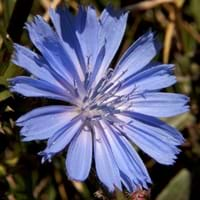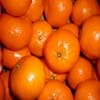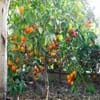Life Span
Perennial
Perennial
Type
Fruit
Flowering Plants, Shrubs, Vegetable
Origin
Hybrid origin, Asia
Mediterranean
Types
Not Available
Belgian Endive, Red Belgian Endive, Curly Endive (a.k.a. Frisee), Escarole, Radicchio (Chioggia) and Radicchio (Chioggia)
Habitat
Lawn
Grassland, Mediterranean region, Wild
USDA Hardiness Zone
11-12
3-9
Sunset Zone
H1, H2, 8, 9, 12, 13, 14, 15, 16, 17, 18, 19, 20, 21, 22, 23, 24
A1, A2, A3, H1, H2, 1a, 1b, 2a, 2b, 3a, 3b, 4, 5, 6, 7, 8, 9, 10, 11, 12, 13, 14, 15, 16, 17, 18, 19, 20, 21, 22, 23, 24
Habit
Oval or Rounded
Clump-Forming
Flower Color
White, Red, Purple
Blue
Flower Color Modifier
Bicolor
Not Applicable
Fruit Color
Yellow, Yellow green
Brown
Leaf Color in Spring
Dark Green
Green
Leaf Color in Summer
Dark Green
Green
Leaf Color in Fall
Dark Green
Green
Leaf Color in Winter
Light Green
Green
Plant Season
Spring, Summer, Fall, Winter
Summer
Sunlight
Full Sun, Partial Sun
Full Sun, Part sun
Growth Rate
Medium
Medium
Type of Soil
Loam, Sand
Loamy, Sandy
The pH of Soil
Acidic, Neutral
Acidic, Alkaline, Neutral
Soil Drainage
Well drained
Well drained
Bloom Time
Indeterminate
Summer
Tolerances
Drought
Not Available
Where to Plant?
Ground, Pot
Ground
How to Plant?
Cuttings, Grafting, Seedlings
Seedlings
Plant Maintenance
Medium
Medium
Watering Requirements
Reduce watering in winter, Water frequently while growing
Keep the ground moist but not water-logged, Prefer drip-irrigation instead of Over-head watering, Requires regular watering, Requires watering in the growing season
In Summer
Lots of watering
Lots of watering
In Spring
Moderate
Moderate
In Winter
Average Water
Average Water
Soil pH
Acidic, Neutral
Acidic, Alkaline, Neutral
Soil Type
Loam, Sand
Loamy, Sandy
Soil Drainage Capacity
Well drained
Well drained
Sun Exposure
Full Sun, Partial Sun
Full Sun, Part sun
Pruning
Remove damaged leaves, Remove dead branches, Remove dead leaves
Cut or pinch the stems, Prune prior to new growth, Prune to stimulate growth, Remove dead or diseased plant parts, Remove deadheads
Fertilizers
All-Purpose Liquid Fertilizer
All-Purpose Liquid Fertilizer
Pests and Diseases
Leafminer
Aphids, Loopers, Root rot, Viruses, Worms
Plant Tolerance
Drought
Drought
Flower Petal Number
Single
Not Available
Fragrant Bark/Stem
Yes
No
Foliage Texture
Medium
Medium
Foliage Sheen
Glossy
Matte
Attracts
Not Available
Butterflies
Allergy
Anaphylaxis, Oral Allergy
Not Available
Aesthetic Uses
Bonsai
Not Used For Aesthetic Purpose
Beauty Benefits
Not Available
Not Available
Environmental Uses
Air purification
Air purification
Medicinal Uses
Astringent, Diuretic, Febrifuge
Cancer, Digestive disorders, Inflammation, Liver problems, Stomach pain
Part of Plant Used
Fruits, Pulp, Tree trunks
Leaves, Root
Other Uses
Cosmetics, Disinfectant, Edible syrup
Used as an ingredient in coffee
Used As Indoor Plant
Yes
No
Used As Outdoor Plant
Yes
Yes
Garden Design
Container, Edible, Fruit / Fruit Tree, Houseplant, Topiary / Bonsai / Espalier, Tropical
Not Available
Botanical Name
CITRUS limon 'Ponderosa'
Cichorium intybus
Common Name
Lemon, Ponderosa Lemon
Blue daisy, blue dandelion, blue sailors, blue weed, bunk, coffeeweed, cornflower, hendibeh, horseweed, ragged sailors, succory, wild bachelor's buttons, and wild endive
In Hindi
Ponderosa Lemon
कासनी
In German
Ponderosa Zitrone
Chicoree
In French
Citron Ponderosa
chicorée
In Spanish
Ponderosa Lemon
achicoria
In Greek
Ponderosa Lemon
ραδίκι
In Portuguese
Ponderosa Lemon
chicória
In Polish
Ponderosa Lemon
cykoria
In Latin
Ponderosa Lemon
pancratium
Phylum
Not Available
Magnoliophyta
Class
Magnoliopsida
Magnoliopsida
Order
Sapindales
Asterales
Family
Rutaceae
Asteraceae
Clade
Angiosperms, Eudicots, Rosids
Angiosperms, Asterids, Eudicots
Subfamily
Aurantioideae
Cichorioideae
Number of Species
Not Available
Season and Care of Ponderosa Lemon and Chicory
Season and care of Ponderosa Lemon and Chicory is important to know. While considering everything about Ponderosa Lemon and Chicory Care, growing season is an essential factor. Ponderosa Lemon season is Spring, Summer, Fall and Winter and Chicory season is Spring, Summer, Fall and Winter. The type of soil for Ponderosa Lemon is Loam, Sand and for Chicory is Loamy, Sandy while the PH of soil for Ponderosa Lemon is Acidic, Neutral and for Chicory is Acidic, Alkaline, Neutral.
Ponderosa Lemon and Chicory Physical Information
Ponderosa Lemon and Chicory physical information is very important for comparison. Ponderosa Lemon height is 120.00 cm and width 150.00 cm whereas Chicory height is 3.00 cm and width 1.50 cm. The color specification of Ponderosa Lemon and Chicory are as follows:
Ponderosa Lemon flower color: White, Red and Purple
Ponderosa Lemon leaf color: Dark Green
Chicory flower color: Blue
- Chicory leaf color: Green
Care of Ponderosa Lemon and Chicory
Care of Ponderosa Lemon and Chicory include pruning, fertilizers, watering etc. Ponderosa Lemon pruning is done Remove damaged leaves, Remove dead branches and Remove dead leaves and Chicory pruning is done Cut or pinch the stems, Prune prior to new growth, Prune to stimulate growth, Remove dead or diseased plant parts and Remove deadheads. In summer Ponderosa Lemon needs Lots of watering and in winter, it needs Average Water. Whereas, in summer Chicory needs Lots of watering and in winter, it needs Average Water.





